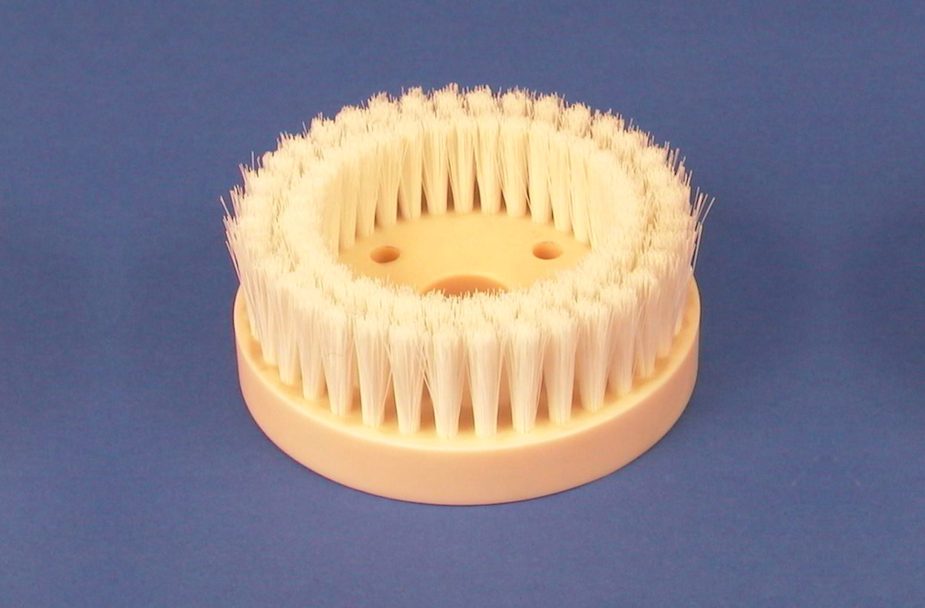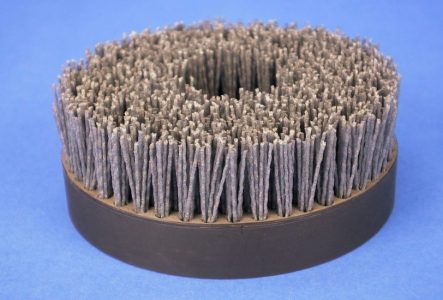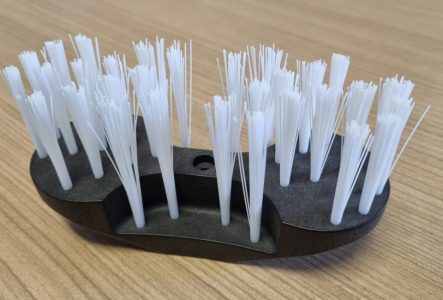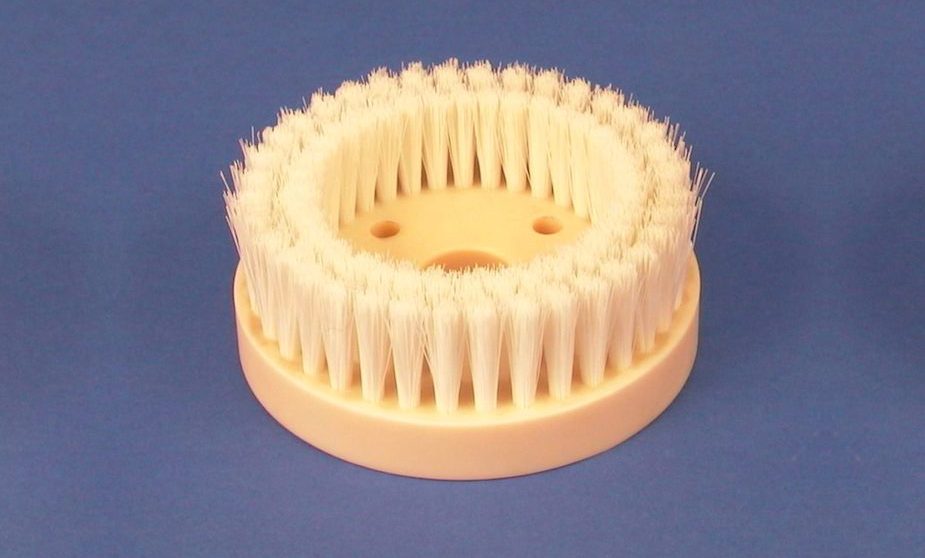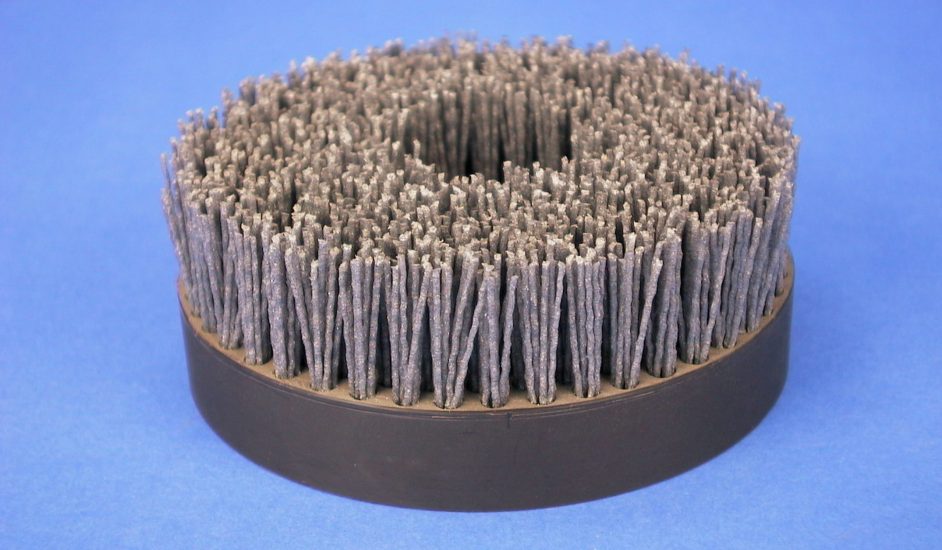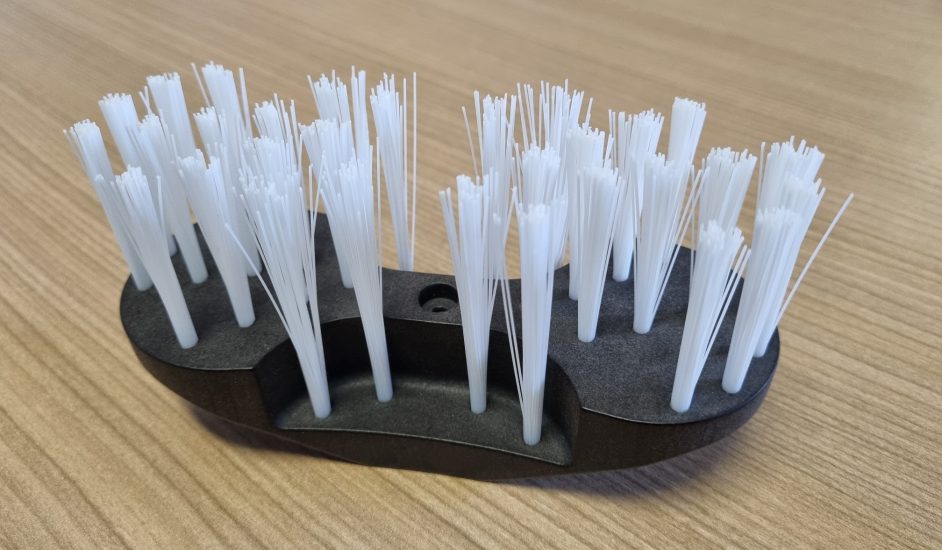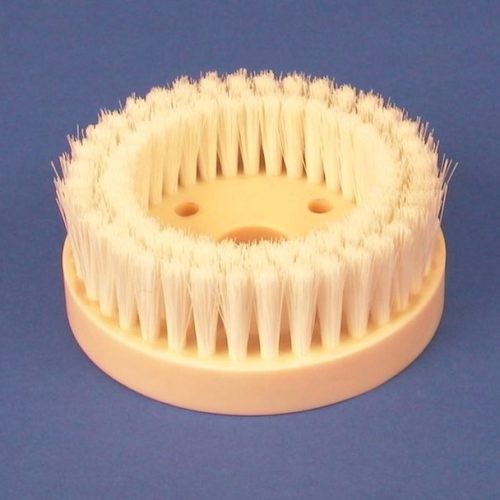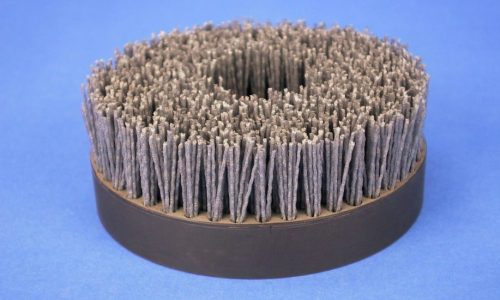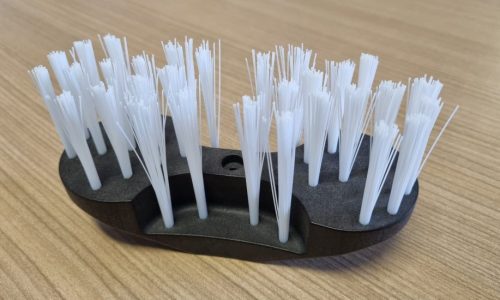Front punched brushes
Front punched brushes
Generalities
They are brushes with the working surface perpendicular to their axis of rotation, therefore suitable for working on flat surfaces, and are motorised. The working surface can be continuous or in sectors.
Front brushes are used for:
- Mechanical cleaning of flat surfaces
- Mechanical sanding of flat surfaces
- Deburring of mechanical parts, such as gear wheels, etc…
The bundles are generally straight, but it is possible to give them an angle as in the figure on the right.
This can be useful to increase the working surface with the same brush body size. The angle α cannot generally exceed 15°.
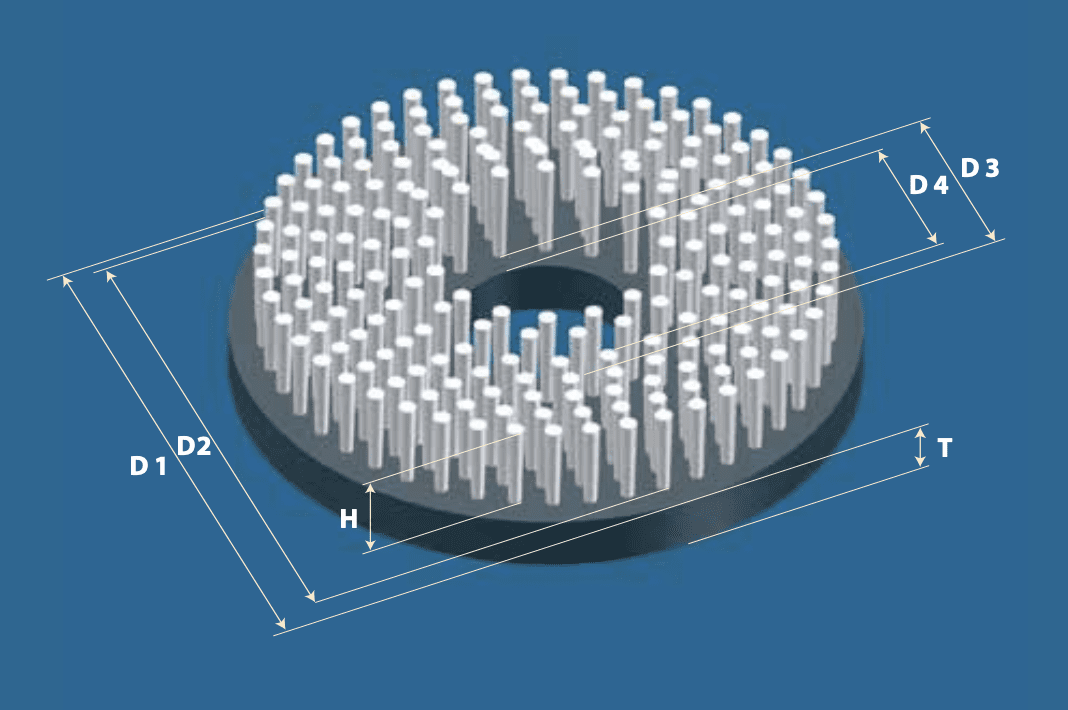
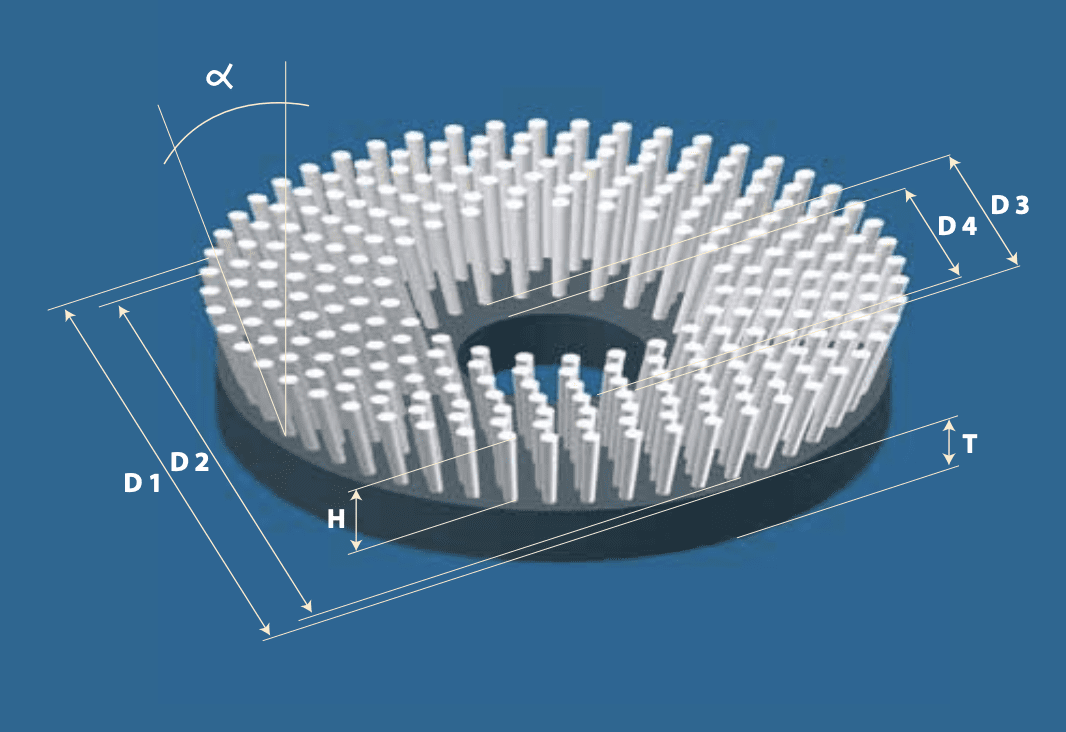
As far as motorisation is concerned, the case of the front brush is the most onerous.
In fact, compared to a roller of the same length, for example, here all the bundles are gripped at the same time. You can size the motor using the following formula: P = (n x N x F1 x R) / 1000 where: P is the required motor power [KW] N is the number of bundles R is the brush radius [m] n is the brush speed [rpm] F1 is the maximum tangential force applicable to the individual bundle [Kg] and it is experimental. The power varies from 0 to P depending on the pressure applied to the brush.
The brush body is generally synthetic, but also made of aluminium in the case of flatness tolerances.
Normally these brushes are mounted on a motorised shaft. For this purpose, a recess can be made to hold the clamping nut, and a keyway can be made to hold the drive. The brush body can also have special shapes for assembly and handling on automatic machines. It is generally obtained by machining, but when it has complex shapes it can be produced by 3D moulding or, with large quantities, by injection moulding.
Videos and images
GALLERY
Do you want to request an offer?
Are you interested in receiving more information and being contacted by one of our specialized operators?
Request your offer now

Do you want to request an offer?
Are you interested in receiving more information and being contacted by one of our specialized operators?
Request your offer now
Frequently asked questions
The special feature of the brush is that the working surface consists of millions of individual elements, which are the ends of individual filaments.
This gives the brush an adaptability that no other element, however deformable, can have.
It depends on various factors. In a nutshell, it can be said that 2 mm is a good compromise. The important thing is that the brush filaments work ‘on the tip’ and not on the side.
Depending on the materials used and the dimensions, there is a limiting tensile load that an individual bundle can withstand.
Beyond this limit, the bundle comes off, so the brush must be calculated according to use. This limit can be greatly increased by constructing ‘sewn’ or ‘tied’ brushes by hand, where instead of a single anchoring element, a continuous steel wire is placed.
There is no single answer. Speaking of e.g. cylindrical brushes, the strip brush is generally cheaper when the dimensions are large (e.g. over one metre in length). For small dimensions, punched brushes are certainly more suitable and convenient.
This can only happen if the brush has a manufacturing defect, like any other type of object (e.g. a roller made of silicone flakes, one of which is defective and breaks).
When it is important that no contamination occurs, synthetic (not natural) fibres with a diameter greater than or equal to 0.15 mm should be used.
Practically all degrees of hardness are possible, from very soft to very hard. In fact, hardness is a combination of the filament diameter, its free length and the density of the bundles.
Of course, we can provide FDA or FOOD GRADE certification and filament traceability.
Unfortunately not, as it is the machine + brush assembly that needs to be ATEX certified, not the brush alone.
However, it is possible to supply the materials that the certifier requires, e.g. conductive bases, conductive filaments, etc.
Generally speaking, it is possible, but one has to assess whether it is cost-effective, which is not always the case. In addition, in the case of a punched brush, it is inadvisable to regenerate the brush more than twice, so as not to reduce the tightness of the bundles.

